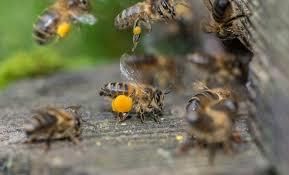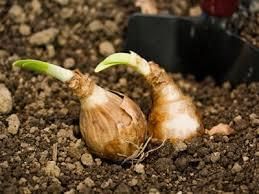Grade 5 Exam > Grade 5 Notes > Reproduction in flowering plants
Reproduction in flowering plants - Grade 5 PDF Download
What is reproduction?
- Reproduction refers to having babies or offspring. Similar to animals, plants need to reproduce. Plant offspring are known as seeds or bulbs.
Reproduction in flowering plants
- Unlike animals, plants don't require a male and a female because their flowers contain both male and female parts.
- In plants, pollen is similar to sperm in animals and originates from the male part of the flower. Plants also have eggs, which come from the female part of the flower.
Question for Reproduction in flowering plantsTry yourself: Which part of a flower produces pollen?View Solution
How do plants reproduce?
These are the steps in reproduction in flowering plants:
- Pollen is transferred from one flower to another by the wind or by insects like bees. This process is called pollination.
- When pollen reaches the new flower, it travels to the ovary where it combines with egg cells (ovules) to form seeds. This process is called fertilization, similar to animals.
- The seeds are then scattered by animals or the wind, a process known as dispersal.
- Some of the dispersed seeds will germinate and grow into new plants.

Asexual reproduction
- Some plants can also reproduce without an egg cell being fertilized to produce a seed. Instead, these plants create an identical copy of themselves through a process known as asexual reproduction.
- Plants can reproduce asexually in various ways. Some plants, like daffodils and snowdrops, produce bulbs. Others, like potatoes, produce tubers. These bulbs and tubers sit under the soil and develop into new plants the following year.

Question for Reproduction in flowering plantsTry yourself: How do daffodils reproduce asexually?View Solution
FAQs on Reproduction in flowering plants - Grade 5
| 1. How do flowering plants reproduce? |  |
Ans. Flowering plants reproduce through a process called pollination, where pollen from the male reproductive structure (stamen) is transferred to the female reproductive structure (pistil) of the same or another flower.
| 2. What are the different types of pollination in flowering plants? |  |
Ans. There are two main types of pollination in flowering plants: self-pollination, where pollen is transferred within the same flower or between flowers of the same plant, and cross-pollination, where pollen is transferred between flowers of different plants.
| 3. What is the role of pollinators in the reproduction of flowering plants? |  |
Ans. Pollinators such as bees, butterflies, birds, and other animals play a crucial role in the reproduction of flowering plants by transferring pollen between flowers, facilitating fertilization and the production of seeds.
| 4. How do flowering plants ensure successful fertilization after pollination? |  |
Ans. After pollination, the pollen grain germinates on the stigma of the flower, forming a pollen tube that grows down the style to reach the ovary. The male gametes then travel through the pollen tube to fertilize the egg cell in the ovule, leading to seed formation.
| 5. What are the advantages of sexual reproduction in flowering plants compared to asexual reproduction? |  |
Ans. Sexual reproduction in flowering plants allows for genetic variation through the combination of genetic material from two parent plants, increasing the chances of adaptation to changing environmental conditions and the survival of the species.
Related Searches



















